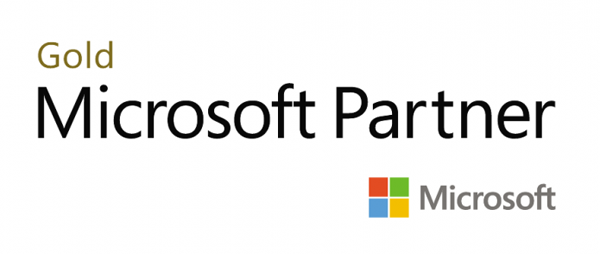Querying Data with Microsoft Transact-SQL (DP-080).
- Seminar
- Präsenz / Virtual Classroom
- 19 Termine verfügbar
- 16 Unterrichtseinheiten
- Teilnahmebescheinigung
- Online durchführbar
Seminarnummer: 29526
Daten aus SQL-Datenbanken abfragen, schnell aber professionell umgesetzt.
In diesem Kurs werden die Grundlagen von Microsofts Dialekt der Standarddatenbanksprache SQL vermittelt: Transact-SQL. Die Themen umfassen sowohl das Abfragen als auch das Ändern von Daten in relationalen Datenbanken, die in Microsoft SQL Server-basierten Datenbanksystemen gehostet werden, einschließlich: Microsoft SQL Server, Azure SQL Database und, Azure Synapse Analytics.
Nutzen
Am Ende des Seminares verfügen Sie über diese Skills:
- Verwendung der SQL Server-Abfragetools
- Erstellen von SELECT-Anweisungen, um Spalten aus einer oder mehreren Tabellen abzurufen
- Sortieren und Filtern ausgewählter Daten
- Verwendung von Integrierten Funktionen, um Datenwerte zurückzugeben
- Erstellen von Datengruppen und Aggregieren der Ergebnisse
- Ändern von Daten mit Transact-SQL unter Verwendung von INSERT, UPDATE, DELETE und MERGE
Zielgruppe
Dieser Kurs ist für diejenigen sinnvoll, die grundlegende SQL- oder Transact-Abfragen schreiben müssen. Dazu gehört die, die als Datenanalyst*in, Dateningenieur*in, Datenwissenschaftler*in, Datenbankadministrator*in oder Datenbankentwickler*in mit Daten aus relationellen SQL-Datenbanken arbeiten.
Anforderungen
Sie verfügen über ein grundsätzliches Verständnis über IT-Lösungen und -Daten.
SQL Server-Vorkenntnisse sind nicht notwendig.
Inhalte
Module 1: Getting Started with Transact-SQL
In this module, you will learn about the basics of the Transact-SQL (T-SQL) language as well as general properties and terminology of relational databases. This module will also introduce the basic SELECT statement for retrieving data from a table.
Module 2: Sorting and Filtering Query Results
In the module, you will learn how to control what data is returned, the order in which it is returned. You will use the ORDER BY clause, with and without paging. You will learn about various kinds of filters that can be used in the WHERE clause to control which data rows are returned. You will also learn how to manage the results by removing duplicates with DISTINCT.
Module 3: Using Joins and Subqueries
In this module, you will explore T-SQL queries which access data from multiple tables with various kinds of JOIN operations and simple subqueries.
Module 4: Using Built-in Functions
In the module, you will explore the use of built-in functions for returning computed or special values in the SELECT list or in the WHERE clause. Functions include math functions, string functions and system functions. There are other types of functions that will be mentioned, but not discussed in detail. You will also learn how to combine rows of data into a single group, providing summary information for the group such as SUM, MIN or MAX.
Module 5: Modifying Data
In this module, you will learn the T-SQL statements for modifying table data including UPDATE, DELETE and MERGE as well as various options for INSERT including creating a new table with data from an existing table. You will also look at how to have the system automatically supply values for columns as the data is inserted.
In this module, you will learn about the basics of the Transact-SQL (T-SQL) language as well as general properties and terminology of relational databases. This module will also introduce the basic SELECT statement for retrieving data from a table.
- Introduction to Transact-SQL
- Using the SELECT statement
Module 2: Sorting and Filtering Query Results
In the module, you will learn how to control what data is returned, the order in which it is returned. You will use the ORDER BY clause, with and without paging. You will learn about various kinds of filters that can be used in the WHERE clause to control which data rows are returned. You will also learn how to manage the results by removing duplicates with DISTINCT.
- Sorting query results
- Filtering the data
Module 3: Using Joins and Subqueries
In this module, you will explore T-SQL queries which access data from multiple tables with various kinds of JOIN operations and simple subqueries.
- Using JOIN operations
- Using subqueries
Module 4: Using Built-in Functions
In the module, you will explore the use of built-in functions for returning computed or special values in the SELECT list or in the WHERE clause. Functions include math functions, string functions and system functions. There are other types of functions that will be mentioned, but not discussed in detail. You will also learn how to combine rows of data into a single group, providing summary information for the group such as SUM, MIN or MAX.
- Getting started with scalar functions
- Grouping aggregated results
Module 5: Modifying Data
In this module, you will learn the T-SQL statements for modifying table data including UPDATE, DELETE and MERGE as well as various options for INSERT including creating a new table with data from an existing table. You will also look at how to have the system automatically supply values for columns as the data is inserted.
- Inserting data into tables
- Modifying and deleting data
Hinweise
Für umfangreicheres SQL Query-Wissen beachten Sie auch unseren zusätzlichen 2-tägigen Advanced-Query-Kurs, Seminarnummer 29540.


